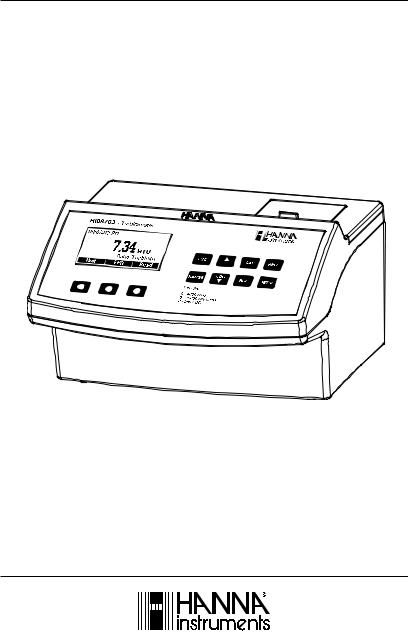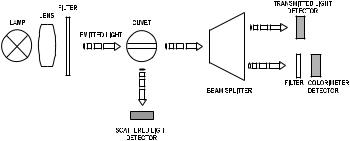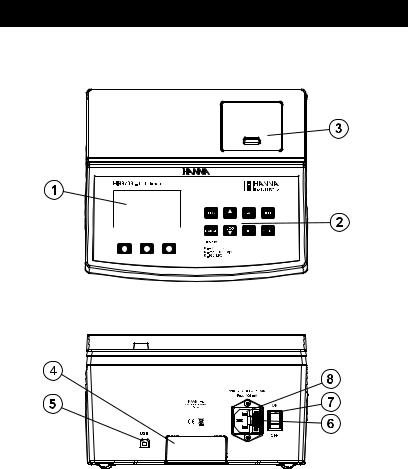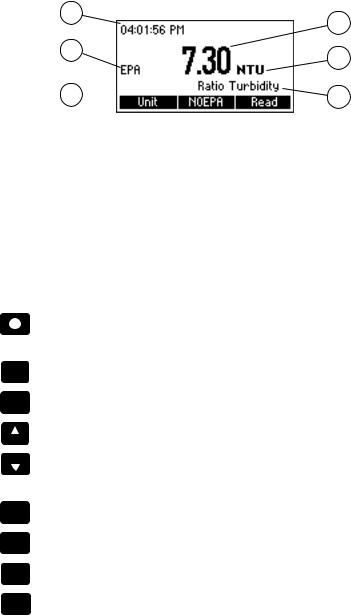Hanna Instruments HI 88703 User Manual

Instruction Manual
HI 88703
Turbidity Meter
w w w. h a n n a i n s t . c o m
1

Dear Customer,
Thank you for choosing a Hanna Instruments product.
Please read this instruction manual carefully before using this instrument.
This manual will provide you with the necessary information for correct use of this instrument, as well as a precise idea of its versatility.
If you need additional technical information, do not hesitate to e-mail us at tech@hannainst.com or view our worldwide contact list at www.hannainst.com.
WARRANTY
HI 88703 is guaranteed for two years against defects in workmanship and materials when used for its intended purpose and maintained according to instructions. This warranty is limited to repair or replacement free of charge.
Damage due to accidents, misuse, tampering or lack of prescribed maintenance is not covered.
If service is required, contact the dealer from whom you purchased the instrument. If under warranty, report the model number, date of purchase, serial number and the nature of the problem. If the repair is not covered by the warranty, you will be notified of the charges incurred. If the instrument is to be returned to Hanna Instruments, first obtain a Returned Goods
Authorization number from the Technical Service department and then send it with shipping costs prepaid. When shipping any instrument, make sure it is properly packed for complete protection.
To validate your warranty, fill out and return the enclosed warranty card within 14 days from the date of purchase.
All rights are reserved. Reproduction in whole or in part is prohibited without the written consent of the copyright owner, Hanna Instruments Inc., Woonsocket, Rhode Island, 02895, USA.
2

TABLE OF CONTENTS |
|
WARRANTY .......................................................................................................................... |
2 |
PRELIMINARY EXAMINATION ................................................................................................. |
4 |
GENERAL DESCRIPTION ........................................................................................................ |
4 |
ABBREVIATIONS .................................................................................................................. |
5 |
PRINCIPLE OF OPERATION .................................................................................................... |
5 |
FUNCTIONAL DESCRIPTION ................................................................................................... |
7 |
SPECIFICATIONS ................................................................................................................... |
9 |
GENERAL TIPS FOR AN ACCURATE MEASUREMENT ............................................................... |
10 |
START UP .......................................................................................................................... |
16 |
RANGE SELECTION ............................................................................................................. |
17 |
TUTORIAL MODE ................................................................................................................ |
17 |
HELP MODE ....................................................................................................................... |
18 |
MEASUREMENT PROCEDURE FOR RATIO/NON RATIO TURBIDITY RANGE ............................... |
18 |
CALIBRATION PROCEDURE FOR RATIO/NON RATIO TURBIDITY RANGE ................................... |
21 |
GOOD LABORATORY PRACTICE (GLP) .................................................................................... |
26 |
RESTORE FACTORY CALIBRATION ......................................................................................... |
26 |
LOG AND LOG RECALL ......................................................................................................... |
27 |
SETUP ............................................................................................................................... |
28 |
LAMP REPLACEMENT .......................................................................................................... |
30 |
FUSE REPLACEMENT .......................................................................................................... |
31 |
PC INTERFACE ................................................................................................................... |
31 |
ACCESSORIES ..................................................................................................................... |
31 |
3

PRELIMINARY EXAMINATION
Please examine this product carefully. Make sure that the instrument is not damaged. If any damage occurred during shipment, please notify your local Hanna Office.
Each HI 88703 Bench Turbidity instrument is supplied complete with:
•Five Sample Cuvettes and Caps
•Calibration Cuvettes for turbidimeter
•Silicone Oil
•Tissue for wiping the cuvettes
•Power cord
•Instruction Manual
•Instrument Quality Certificate
Note: Save all packing material until you are sure that the instrument functions correctly. Any defective item must be returned in its original packing with the supplied accessories.
GENERAL DESCRIPTION
HI 88703 is a high accuracy, meter that benefits from Hanna’s years of experience as manufacturer of analytical instruments.
The HI 88703 is especially designed for water quality measurements, providing reliable and accurate readings on low turbidity. The HI 88703 meets and exceeds the requirements of USEPA and Standard Methods.
The instrument is based on a state-of-the-art optical system which guarantees accurate results, assures long term stability and minimizes stray light and color interferences. It also compensates for variations in intensity of the lamp, making no need for frequent calibration.
The 25 mm round cuvettes made from special optical glass guarantee the repeatability and consistency of the measurements.
Turbidity measurements can be made in the 0.00 to 4000 NTU (Nephelometric Turbidity Units) range when ratiometric measurements are used and in the 0.00 to 40.0 NTU range when non ratio method is used. The instrument has an EPA compliance reading mode which rounds the reading to meet EPA reporting requirements. Alternative EBC and Nephelos measuring units are available.
Depending on the measured sample and needed accuracy, normal measurement, continuous measurement or signal averaging measurement can be selected.
A two, three, four or five-point calibration could be performed by using the supplied (<0.1, 15, 100, 750 and 2000 NTU) standards. When user prepared standards are used, the calibration points can be modified.
HI 88703 has complete G.L.P. (Good Laboratory Practice) functions that allows traceability of the calibration conditions. The last calibration points, time and date can be checked.
4

HI 88703 has a user-friendly interface with an easy to understand, graphical LCD. All messages are in plain text, easy to read and understand. Comprehensive contextual help is available at a simple key press. All messages and helps are available in several languages. Confirmation and error acoustic signals help the user during instrument operation. Furthermore, a tutorial mode of operation guides the user step by step through the analysis process.
The instrument’s logging function offers complete information for the measurement. Up to 200 measurements can be stored in the internal memory and consulted at any time. In order to further store or analyse, the data can be downloaded to a PC using the USB port.
ABBREVIATIONS
NTU |
Nephelometric Turbidity Units |
RTC |
Real Time Clock |
JTU |
Jackson Turbidity Units |
RH |
Relative Humidity |
FTU |
Formazin Turbidity Units |
ID |
Identification |
USEPA |
US Environmental Protection Agency |
EBC |
European Brewery Comitee |
LCD |
Liquid Crystal Display |
|
|
PRINCIPLE OF OPERATION
Turbidity is the optical property that causes light to be scattered and absorbed, rather than transmitted.
The scattering of the light that passes through a liquid is primarily caused by the suspended solids.
The higher the turbidity, the greater the amount of scattered light. Because even the molecules in a very pure fluid scatter light to a certain degree, no solution will have zero turbidity.
The USEPA Method 180.1 specify the key parameters for the optical system to measure turbidity for drinking, saline and surface water in a 0 to 40 NTU range, using the nephelometric method.
The HI 88703 instrument is designed to meet or exceed the criteria specified by the USEPA Method 180.1 and Standard Method 2130 B.
The light beam that passes through the sample is scattered in all directions. The intensity and pattern of the scattered light is affected by many variables like wavelenght of the incident light, particle size and shape, refractive index and color.
The optical system includes a tungsten filament lamp, a scattered light detector (900) and a transmitted light detector (1800).
5

For the ratio turbidimeter range, the microprocessor of the instrument calculates the NTU value, from the signals that reaches the two detectors, by using an effective algorithm. This algorithm corrects and compensates for interferences of color, making the HI 88703 instrument color-compensated.
The optical system and measuring technique compensate also for the lamp intensity fluctuations, minimizing the need of frequent calibration.
For the non ratio turbidimeter range, the NTU value is calculated from the signal on the scattered light detector (90°). The method offers a high linearity on the low range. The method is more sensitive to the lamp intensity fluctuations.
The lower detection limit of a turbidimeter is determined by the so called “stray light”. Stray light is the light detected by the sensors, that is not caused by light scattering from suspended particles.
The optical system of HI 88703 instrument is designed to have very low stray light, providing accurate results for low turbidity samples. However, special care must be taken when measuring low turbidities (see page 10 “General Tips for an Accurate Measurement” for sample preparation and measuring techniques).
MEASUREMENT UNITS
The most used units for turbidity are NTU (Nephelometric Turbidity Units). In the beer industry a common unit is EBC (European Brewery Comitee).
The HI 88703 turbidimeter reports the measurements in NTU, EBC or Nephelos. One NTU is equal with 0.245 EBC or 6.7 Nephelos.
Calibration and measurements are done only in NTU and the results in other units are obtained by multiplying with the respective factors.
6

FUNCTIONAL DESCRIPTION
INSTRUMENT DESCRIPTION
1)Liquid Crystal Display (LCD). The LCD has backlight for better visibility in dark environments.
2)Keypad. Splash proof resistant.
3)Cuvette Lid. Close the cuvette lid prior to start a measurement.
4)Lamp lid and the related fixing screw
5)USB connector
6)Fuse holder
7)Mains switch
8)Mains connector
7

DISPLAY DESCRIPTION
The display contains the following fields:
1
2
3
1)The current time in selected format
2)Information related to the measurement
3)Functional keys
4)Currently selected parameters
5)Measuring units
6)Measured value
KEYBOARD DESCRIPTION
6
5
4
The keyboard contains 8 direct keys and 3 functional keys with the following functions:
ESC
RANGE
LOG
The function of each of the three functional keys depends on the name displayed on the LCD above them.
Press to return to the main screen.
When in the main screen, press to access the change parameter screen.
Press to move up in menu and help or to increment a set value.
Press to move down in menu and help or to decrement a set value. Press to log the current reading.
CAL
RCL
HELP
SETUP
Press to access calibration menu.
Press to recall the log.
Press to display the help screen.
Press to access the setup screen.
8
|
SPECIFICATIONS |
|
|
Range - non ratio mode |
0.00 to 9.99; 10.0 to 40.0 NTU |
|
0.0 to 99.9; 100 to 268 Nephelos |
|
0.00 to 9.80 EBC |
Resolution - non ratio mode |
0.01; 0.1 NTU |
|
0.1; 1 Nephelos |
|
0.01 EBC |
Range - ratio mode |
0.00 to 9.99; 10.0 to 99.9; 100 to 4000 NTU |
|
0.0 to 99.9; 100 to 26800 Nephelos |
|
0.00 to 9.99; 10.0 to 99.9; 100 to 980 EBC |
Resolution - ratio mode |
0.01; 0.1; 1 NTU |
|
0.1; 1 Nephelos |
|
0.01; 0.1, 1 EBC |
Range selection |
Automatically |
Accuracy |
±2% of reading plus 0.02 NTU (0.15 Nephelos; 0.01 EBC) |
|
±5% of reading above 1000 NTU (6700 Nephelos; 245 EBC) |
Repeatibility |
±1% of reading or 0.02 NTU (0.15 Nephelos; 0.01 EBC) |
|
whichever is greater |
Stray Light |
< 0.02 NTU (0.15 Nephelos; 0.01 EBC) |
Light Detector |
Silicon Photocell |
Method |
Nephelometric method (90°) or Ratio Nephelometric Method |
|
(90° & 180°), Adaptation of the USEPA Method 180.1 and |
|
Standard Method 2130 B. |
Measuring mode |
Normal, Average, Continuous. |
Turbidity Standards |
<0.1, 15, 100, 750 and 2000 NTU |
Calibration |
Two, three, four or five-point calibration |
Light Source |
Tungsten filament lamp |
Lamp life |
greater than 100,000 readings |
Display |
40 x 70 mm graphic LCD (64 x 128 pixels) with backlight |
LOG Memory |
200 records |
Serial Interface |
USB |
Environment |
0 °C (32 °F) to 50 °C (122 °F); max 95% RH non-condensing |
Power supply |
230 V/50 Hz or |
|
115 V/60 Hz 20 W |
Auto Shut-off |
After 15 minutes of non-use |
Dimensions |
230 x 200 x 145 mm (9 x 7.9 x 5.7”) L x W x H |
Weight |
2.5 Kg (88 oz.) |
9

GENERAL TIPS FOR AN ACCURATE MEASUREMENT
HI 88703 is a highly accurate meter for turbidity. To meet the instrument’s performance and fully benefit of its features, it is very important for the analyst to use proper measurement techniques for accurate, precise and repeatable readings. Special care must be taken during sample preparation and handling. The instructions listed below should be carefully followed during measuring and calibration to ensure best accuracy.
GENERAL RULES
•Always put the instrument on a flat, rugged surface when taking measurements.
•Do not operate in direct sunlight.
•Keep the lid of the instrument closed when it is not used to prevent dust or dirt entering inside.
•Always close the lid of the instrument during measurement.
•Always use cuvettes without scratches or cracks because they can cause inaccurate readings.
•Always cap the cuvettes to avoid spillage of the sample into the instrument.
•Do not use too much oil to prevent contamination of the optical system.
•If possible use indexed and matched cuvettes.
CUVETTE
The cuvette is part of the optical system in all measurements. The light reaches the sample by passing through the cuvette glass. As a result, the measurement can be affected by the glass imperfections, dirt, dust, scratches, or fingerprints present on the cuvette surface. Special care must be taken in preparing and handling the cuvette.
Note: If you are using multiple cuvettes, always match the cuvettes.
CUVETTE HANDLING
The cuvettes should be free of scratches or cracks. Any cuvette with visible scratches will be discarded. The cuvettes should be periodically washed with acid. After washing, the cuvettes should be well rinsed multiple times with distilled or deionized water. Allow cuvettes to air-dry and store them for long periods of time with caps, to avoid dirt entering inside. Always handle the cuvette by touching only the cap or its top side (over the horizontal line).
Always store the cuvettes in separate boxes or with separators between them to avoid scratches on the surface.
CUVETTE PREPARATION
Whenever a cuvette is used, it must be clean inside and outside. When it is placed into the instrument, it must be dry outside, completely free of fingerprints or dirt.
10
